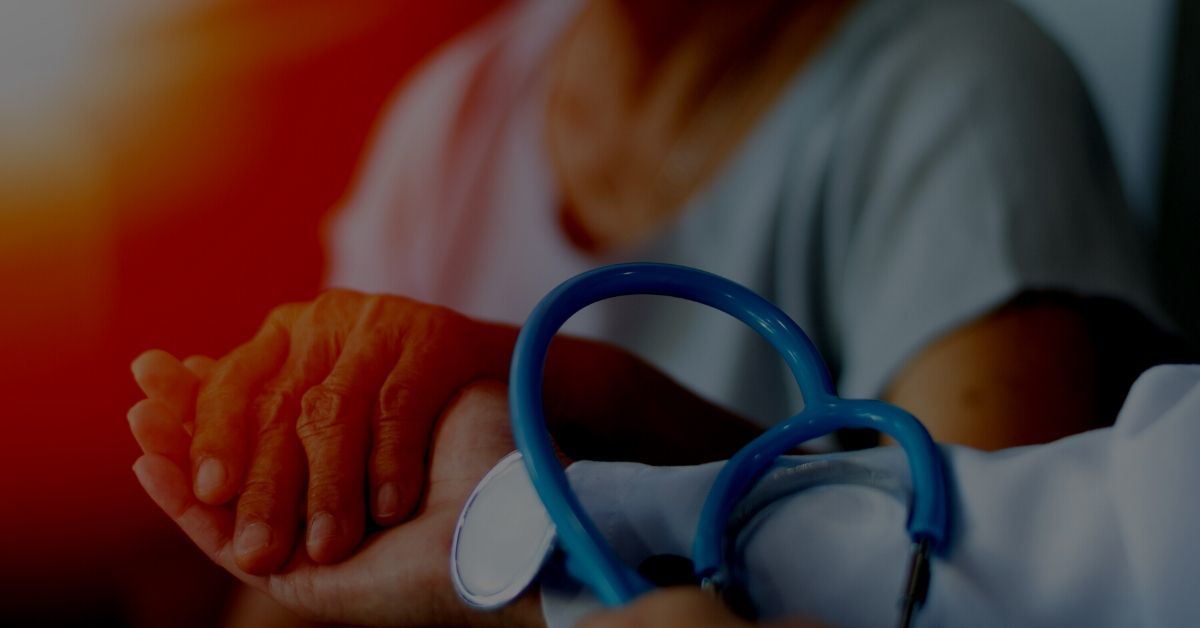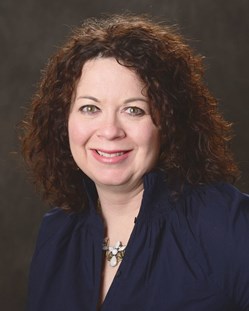2020—A Year Long Celebration of the Amazing Accomplishments of Nurses
Every day nurses around the globe deliver kind, compassionate care—they hold the hand of an elderly patient; dry the tears of a frightened child; and comfort grieving family members. For this work—and in recognition of the 200th anniversary of Florence Nightingale’s birth—the World Health Organization has designated 2020 as the “Year of the Nurse and Midwife.” Here at TeleTracking, we are honored to have many dedicated, devoted nurses on our team—and are also honored to work with so many wonderful nurses at our client sites. And that’s why every month this year, we’ll be featuring the touching, inspiring stories of the people that work hard to ensure that no one should ever have to wait for the care they need.

Maria Romano, RN, BS is the Clinical Advisor for the East Commercial Team at TeleTracking. Every day she helps clients achieve clinical success by demonstrating how the combination of TeleTracking's solutions and best practice-driven workflows empower hospital organizations to eliminate waste, optimize operations and support the delivery of the highest quality care for sick patients. Prior to joining TeleTracking, Maria built and managed the Patient Logistics & Transfer Center at St. Peter’s Hospital in Albany, NY. Maria has also been a speaker at the annual Magnet Conference, where she presented her abstract “How Maslow’s Hierarchy of Needs has a Direct Effect on Nursing Retention.”
1. Why did you decide to become a nurse?
When I was a little girl riding in the back seat of my parent’s car, I would hold my breath as we drove past the local hospital, thinking about everything that was going on inside and just wanting to be a part of it. The desire never left me. However, for some reason after graduating from high school—and being accepted into a college nursing program—I decided I couldn’t do it and pursued an education degree instead. I taught for one year and realized…this is NOT for me; I need to be brave and go to nursing school. So, I did and have been in love with the art of nursing ever since. In fact, I was a student nurse at the local hospital I had driven by so many times. I still remember the moment I walked in with my student nursing cap and uniform and knew in my heart that this was exactly where I needed to be and what I should be doing.
2. What are the biggest differences you’ve seen in the profession since you started your career?
Nurses being driven away from the patient bedside because so much time is spent in front of a computer.
3. What is the biggest challenge(s) facing nurses today?
Burnout is the biggest challenge facing nurses today. This breaks my heart because when I listen to what they are saying, they fundamentally want to care for their sick patients. However, the nurse to patient ratio makes it impossible. Healthcare cuts need to stay away from nursing budgets in hospitals. Not to mention the juggling act they do every day is unsustainable—simultaneously providing the right level of care to patients, meeting EMR demands, and dealing with the difficulties involved in finding the right equipment.
4. What do you think can be done to solve the nursing shortage?
The nursing shortage can be solved by continuing to elevate the profession. We need to listen to nurses, hear their voices, and look into their hearts. During the journey of my own career, I had the opportunity to do a research project that included doing peer-to-peer RN exit interviews. The outcomes were astonishing and very well-identified—they didn’t feel that they had the proper resources to ensure they patient they were caring for was safe; they were burnt-out because they felt that leadership wasn’t listening to them. The bottom line is we need to get back to the basics of listening to the people on the front lines in order to resolve the nursing shortage.
5. Share a patient story that has impacted you personally.
This patient story happened 30 minutes before the end one of my 12-hour shifts. I just received a new admission of a beautiful 60-year-old female who was boarded in the emergency department for over six hours, and the only thing she asked me for before starting her admission process was a pillow. I found one, brought it back to her, and as soon as I placed it under her head and fixed her blanket, she said “thank you,” began to cry and grabbed my hand. As she sobbed, I asked her what was wrong, and she responded that the doctor had just told her that she had metastatic lung cancer and didn’t have a long to live. I stayed with her for a while, and we talked about the beautiful life she had and how she needs to make every minute count. I was FULLY PRESENT the entire time we talked, and all of the tasks that were overwhelming me quickly vanished as I helped this person during one of the most vulnerable times of her life. Her face is imprinted in my mind and on my heart—I gave her a pillow, I held her hand, took the time to listen to her story—and never worried about electronically documenting my assessment! To me, this is the definition of being a nurse.
6. The World Health Organization has designated 2020 the International Year of the Nurse and the Midwife. Why is this type of recognition so important?
In 1870 Florence Nightingale stated, “It will take 150 years for the world to see the kind of nursing I envision.” Well, it’s 2020 and that’s why 2020 has been designated with this honor. The profession of nursing has finally gained confidence in developing evidence-based practice/research and innovation. They have become transformational by turning clinical ideas into outcomes. This is super exciting!!!
7. How does TeleTracking help nurses and other health professionals deliver a better patient experience?
TeleTracking helps nurses and other health professionals deliver a better patient experience by ensuring that the patient doesn’t need to leap through hurdles to get the care they need. TeleTracking takes the silo mentality and replaces it with the mentality of full transparency. We drive the data that helps prove workflows can be fixed when a problem arises around the patient experience. We provide confidence—so that health systems can say we are ensuring that no patient needs to wait for the care they need.
8. How are TeleTracking’s health system command centers helping improve access across the care continuum?
By ensuring that no patient will ever have to wait for the care they need— from home-to-home.
Navigating care in the landscape of today’s health systems can be very tricky. TeleTracking provides the expertise for the two activities that need to happen to achieve positive outcomes—change management around managing capacity and giving time back time to clinicians to deliver care at the bedside.
More about this blog post
About the Expert
 Maria Romano, RN, BS
Maria Romano, RN, BS
Clinical Advisor
Maria Romano, RN, BS, is a Clinical Client Success Manager at TeleTracking. Prior to joining TeleTracking, Maria spent more than seven years at St. Peter’s Hospital in Albany, NY where she built and managed the Patient Logistics & Transfer Center. Maria’s abstract was chosen as a podium presentation at the Magnet Conference where she presented on: How Maslow’s Hierarchy of Needs has a Direct Effect on Nursing Retention.
We're glad you're enjoying our resources! Please tell us more about you to access our full library.
This will allow us to personalize your experience on TeleTracking.com. Of course, we will never sell your information and you can opt-out at any time. Need help now? Contact a Patient Flow expert.
Leaving the website
You're about to leave this website, to one of our affiliates or another information source.